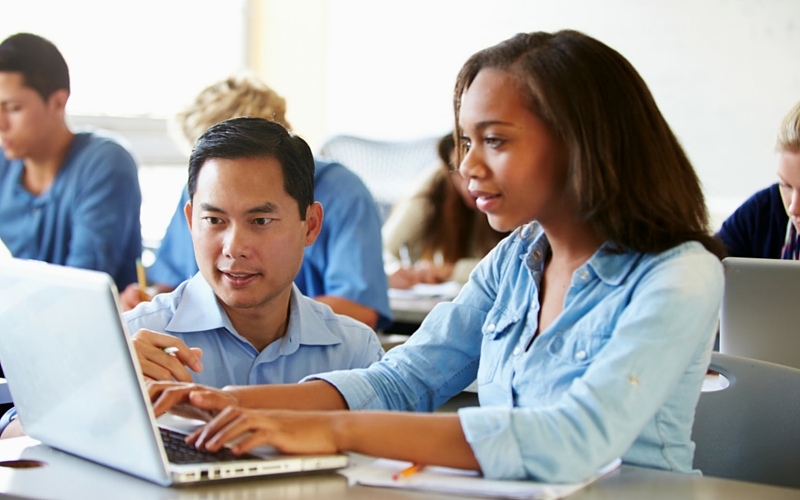Readiness through blended learning reaps benefits for all students.
by Eileen Wedegartner, Blended Learning Specialist
Since joining JFYNetWorks as a Blended Learning Specialist last fall, I have had the opportunity to visit many schools and interact with many students. Despite my many years of experience in the classroom and additional years in statewide education administration, this was a new and eye-opening experience. It has proved to be challenging, and extremely rewarding.
Having spent the better portion of my professional life working with students who face barriers to learning, I can empathize with their struggles and with the challenges their teachers face on a daily basis. As an educator, I have always believed that where there is a will, there is a way.
When technology first emerged in education, I experienced firsthand how difficult it can be to integrate technology into the classroom. Limited access to computer labs, shortage of working computers, internet issues and scarcity of tech support were frustrating obstacles. But with time, declining costs and sheer will, these obstacles gradually fell by the wayside and allowed teachers to embrace blended learning—the infusion of technology into traditional teaching. Teachers recognized that the range and flexibility of online resources could reap benefits for all students.
Though I am not in front of the classroom today, I find it exciting to provide access to online programs that give students high-quality reading and math instruction to get them ready for college and careers, and, just as importantly, to prepare them for thoughtful, informed and engaged citizenship. Having spent many prior years in front of the classroom, I know the value of online tools that assess and instantly place students at the appropriate reading or math instructional level and then increase rigor automatically through ongoing formative assessment. For the teacher, it’s like having a teaching assistant in the classroom.
A program that effectively meets students at their measured ability level and then builds incrementally on those skills is a lifesaver to any teacher who has a class where students’ abilities run the gamut. That description applies to almost any teacher. Incorporating online resources into current instruction allows students to pace their learning and frees up the teacher to do more creative activities in the classroom. These can be Socratic seminars based on readings, peer teaching in a math class, and a host of other activities in which students connect their individual learning to the class curriculum.
There are still people who think technology interferes with the education of young people or threatens the role of teachers. With all due respect, many long years of experience and observation have convinced me that technology properly used frees teachers to teach and students to form their own ideas and search out new information on their own. Creative engagement in their own learning process challenges them to continue working even after class time has ended. This kind of self-directed activity prepares young people for their future in a world that demands self-motivation and discipline. It develops literacy in technology and digital content as well as high standards of reading, writing, and math. This year has taught me that a classroom built on blended learning removes barriers to learning and teaching.
As the year ended, it was gratifying to realize the progress students had made through their own efforts and to observe their satisfaction as they learned that they had made the college cut score on the Accuplacer. College was no longer out of reach: they were college ready. But it was not just about a test; not even just about college. The real achievement they had earned was readiness for the next phase of life, an achievement they will have to repeat many times. They had learned the overarching lesson that, in Hamlet’s words, “the readiness is all.”
And they were ready.





